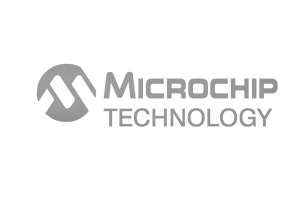ATSAMR21E18A-MFTA7 Overview
The ATSAMR21E18A-MFTA7 is a highly integrated 2.4 GHz IEEE 802.15.4-compliant transceiver and microcontroller combination designed for low-power wireless applications. This device combines an ARM Cortex-M0+ core with a radio transceiver, enabling robust and efficient wireless communication for industrial and consumer IoT systems. With advanced features such as integrated 256 KB flash memory, 32 KB SRAM, and comprehensive peripherals, it supports reliable RF connectivity while optimizing power consumption. Engineers and sourcing specialists can leverage this module for scalable wireless designs, benefiting from its compact footprint and extensive protocol support. For detailed sourcing, visit IC Manufacturer.
ATSAMR21E18A-MFTA7 Technical Specifications
| Parameter | Specification |
|---|---|
| Core | ARM Cortex-M0+ 32-bit processor |
| Operating Frequency | 2.4 GHz ISM band |
| Flash Memory | 256 KB embedded flash |
| SRAM | 32 KB |
| Communication Protocol | IEEE 802.15.4 compliant |
| Power Supply Voltage | 1.8 V to 3.6 V |
| Package | 32-pin QFN (7×7 mm) |
| Operating Temperature Range | -40??C to +85??C |
| Transmit Power | Up to +8 dBm |
| Receiver Sensitivity | Down to -100 dBm |
ATSAMR21E18A-MFTA7 Key Features
- Integrated ARM Cortex-M0+ core delivers efficient processing for wireless protocol handling and application tasks, reducing the need for external controllers.
- Compliance with IEEE 802.15.4 standard ensures compatibility with Zigbee and other wireless mesh networking protocols, facilitating seamless system integration.
- Low power consumption modes extend battery life in portable and remote applications, critical for IoT devices requiring long operational times.
- High receiver sensitivity improves link reliability and range, supporting robust communication in challenging RF environments.
- Sufficient embedded flash and SRAM memory enable complex application development without external memory components, saving board space and cost.
- Compact 32-pin QFN package simplifies PCB layout and supports miniaturization in space-constrained designs.
- Wide operating voltage range allows flexibility in power supply design and compatibility with various battery chemistries.
ATSAMR21E18A-MFTA7 Advantages vs Typical Alternatives
This device offers a unique combination of integrated low-power ARM processing with a high-performance IEEE 802.15.4 transceiver, achieving superior sensitivity and transmit power compared to many standalone RF modules. Its embedded memory and compact package reduce overall system complexity and cost. The extended temperature range and robust power management features enhance reliability in industrial environments, making it a competitive choice over traditional discrete solutions.
🔥 Best-Selling Products
-

Texas Instruments BQ24075 Linear Battery Charger IC – 5mm x 4mm QFN Package
-

Texas Instruments INA219 Current Sensor Module – SOIC Package, Precision Monitoring
-

Texas Instruments LM4041 Precision Voltage Reference – SOT-23 Package
-

Texas Instruments OPA2134 Audio Op Amp – Dual, High-Performance, SOIC-8 Package
Typical Applications
- Wireless sensor networks and industrial IoT nodes requiring reliable 2.4 GHz communication with low power consumption and compact design.
- Smart home devices implementing Zigbee or similar mesh protocols for seamless device connectivity and control.
- Remote monitoring systems where battery life and communication range are critical for maintenance-free operation.
- Asset tracking and automated metering infrastructure leveraging IEEE 802.15.4 for secure and scalable wireless data transfer.
ATSAMR21E18A-MFTA7 Brand Info
This product is part of the ATSAMR21 family, known for integrating microcontroller and radio transceiver functionality into a single package. It is designed to meet the demanding requirements of modern wireless embedded applications. The combination of low-power ARM Cortex-M0+ processing and a high-performance 2.4 GHz radio supports efficient protocol implementation and robust connectivity. This product is widely adopted across industrial, consumer, and IoT markets for its reliability, integration, and ease of use.
FAQ
What communication protocols does this device support?
The transceiver within this device is fully compliant with the IEEE 802.15.4 standard, making it suitable for Zigbee, Thread, and other wireless mesh networking protocols. This ensures interoperability with a wide range of wireless systems commonly used in IoT and industrial applications.
🌟 Featured Products
-

“Buy MAX9312ECJ+ Precision Voltage Comparator in DIP Package for Reliable Performance”
-

QCC-711-1-MQFN48C-TR-03-1 Bluetooth Audio SoC with MQFN48C Package
-

0339-671-TLM-E Model – High-Performance TLM-E Package for Enhanced Functionality
-

1-1415898-4 Connector Housing, Electrical Wire-to-Board, Receptacle, Packaged
What are the power supply requirements for the module?
The device operates over a wide voltage range from 1.8 V to 3.6 V, allowing flexibility in power source selection including standard lithium-ion batteries or regulated power supplies. This range supports both low-power battery-operated and mains-powered applications.
How does the embedded memory benefit application development?
With 256 KB of flash memory and 32 KB of SRAM, developers can implement complex wireless protocols and application code without the need for external memory components. This integration reduces system cost and size while enhancing design simplicity.
📩 Contact Us
What is the operating temperature range for reliable performance?
The device is rated for operation from -40??C up to +85??C, making it suitable for industrial and outdoor environments where temperature extremes may occur. This wide range ensures consistent performance and longevity in harsh conditions.
What package options are available for this device?
This product comes in a compact 32-pin QFN package measuring 7×7 mm, optimized for PCB space savings and efficient thermal management. The small footprint supports miniaturized designs without compromising functionality.





